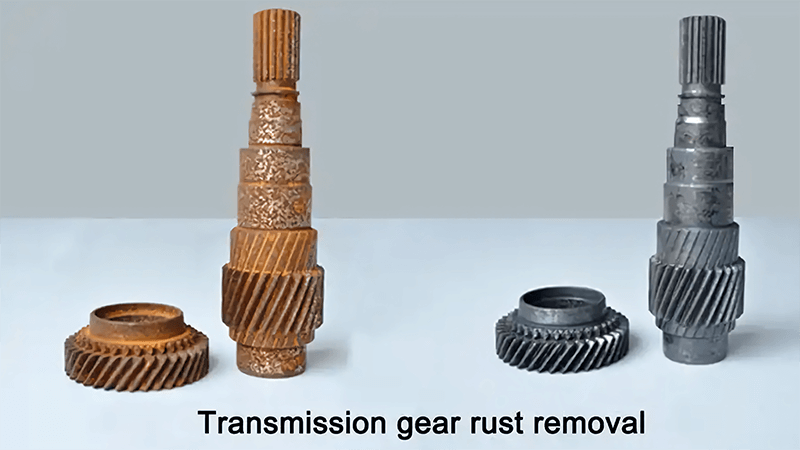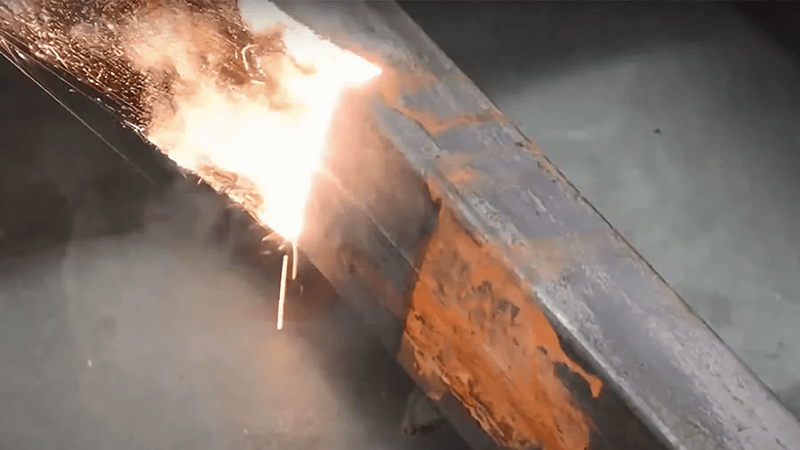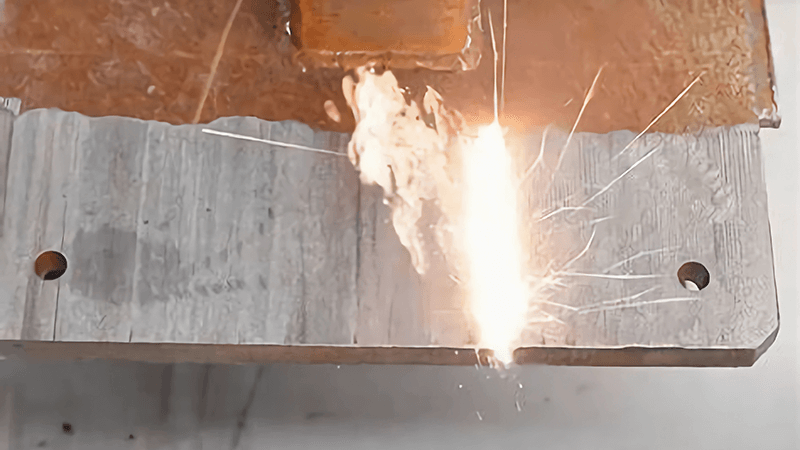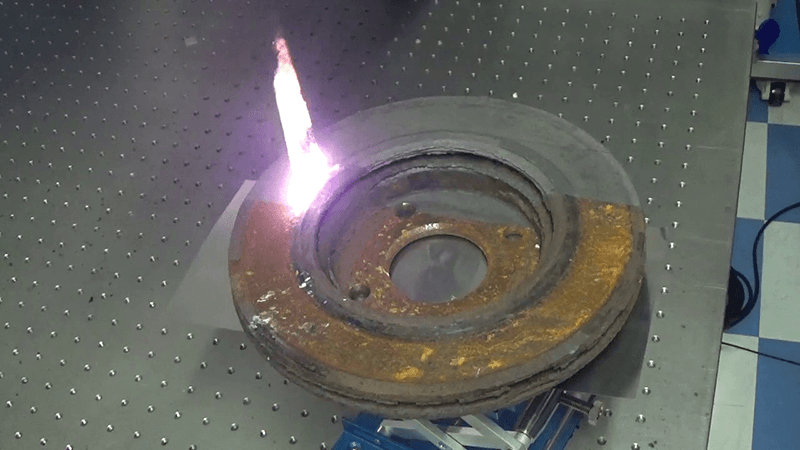If you have ever worried that laser cleaning might harm your expensive metal tools or molds, you are not alone. Many people hesitate because they fear the laser will burn or scratch the surface.
Laser cleaning does not damage the metal surface when tuned correctly. The process removes only rust, paint, or contaminants while leaving the base material intact and smooth. Proper adjustment of pulse energy, frequency, and scan speed ensures full control.
It is easy to assume that a high-power beam will harm the metal, but the reality is more nuanced. When you understand how laser cleaning works, you see why it is safer and more precise than traditional methods.

Does laser cleaning damage metal?
If you have seen videos of sparks and bright flashes, you might think laser cleaning burns metal. That concern is valid. Many first-time buyers worry about micro-cracks or melting.
Laser cleaning does not damage metal because it uses selective absorption. The contaminant layer absorbs the beam and vaporizes, while the dense metal reflects and resists the beam. This makes the process safe for steel, aluminum, and other alloys.
How the mechanism works
Laser cleaning1 relies on physics. Rust, paint, or grease absorb the laser wavelength strongly, but the underlying metal does not. This difference means the contaminant is removed while the substrate remains safe.
Practical experience
I have worked with pulsed laser cleaning2 on precision molds and metal parts. It never damages the substrate when tuned right. It vaporizes only rust or paint, leaving the metal pristine. You just need to set pulse energy, frequency, and scan speed properly.
Comparison with chemical cleaning
| Cleaning Method | Substrate Impact | Efficiency | Safety | Cost |
|---|---|---|---|---|
| Chemical | Can cause pitting and residue | Medium | Uses solvents | Medium |
| Mechanical | Can scratch metal | Medium | No chemicals | Medium |
| Laser | No damage if tuned | High | Eco-friendly | Low long-term |
With the right training, operators see consistent results: shiny, undamaged surfaces.

What are the disadvantages of laser cleaning?
Many buyers also want to know the downsides. Laser cleaning is powerful, but like any tool, it has limits. Some people expect it to solve every cleaning problem without trade-offs.
The disadvantages of laser cleaning include higher initial cost, learning curve for parameter tuning, and slower performance on thick coatings. However, the benefits in precision, safety, and long-term cost savings outweigh these limitations.
Key disadvantages
- Initial investment
Laser cleaning machines3 cost more upfront than chemicals or blasting. - Learning curve
Operators must adjust energy, frequency, and scan speed. Poor tuning can leave residue. - Speed on thick layers
Very thick paint or coatings may need multiple passes.
My client’s story
One client worried our pulsed laser cleaning machine4 would scratch his stainless-steel molds. He used chemical cleaning before, which left residue and pitting. After a demo, he was shocked—the rust vanished, and the metal surface stayed intact and smooth. He said it was the first time he had seen cleaning that precise without a single scratch.
Structured breakdown
| Disadvantage | Real-World Impact | Mitigation |
|---|---|---|
| Cost | High initial machine price | Long-term savings, no chemicals |
| Training | Need to learn parameters | Easy with presets and support |
| Speed | Slower on thick coatings | Multiple passes, higher power |
Even with these drawbacks, the balance leans strongly toward laser cleaning for modern industries.

Can lasers destroy metal?
The word “laser” often makes people think of science fiction weapons cutting through steel plates. In reality, industrial laser cleaning machines are designed for controlled, surface-level work.
Lasers can cut or melt metal if configured with very high power and different optics. Cleaning lasers, however, are tuned to remove contaminants only. They cannot destroy or melt the substrate when used properly.
Power difference
- Cutting lasers: Continuous wave, high power, designed to cut through thick sheets.
- Cleaning lasers5: Pulsed, lower energy, designed for selective ablation.
Why substrate remains safe
When tuned for cleaning, the beam never stays on one spot long enough to heat the metal bulk. Instead, the laser energy lifts away oxidation and leaves the shiny surface untouched.
Critical factors
- Pulse duration6: Nanoseconds to microseconds, avoiding deep heat penetration.
- Beam scanning: Constant motion prevents hot spots.
- Wavelength: Chosen for surface contaminants, not for bulk metal absorption.
Comparison chart
| Application | Laser Type | Power Mode | Effect on Metal |
|---|---|---|---|
| Cleaning | Pulsed, low energy | Selective ablation | Safe surface |
| Cutting | Continuous wave, high power | Melting and vaporization | Full penetration |
| Welding | Continuous wave, medium power | Local fusion | Strong joint |
This difference shows why laser cleaning cannot destroy metal. It is a precision tool, not a cutting blade.

Do laser cleaners actually work?
Skepticism is normal. Some people think it is just marketing hype. Others have tried blasting or chemicals for years and doubt a beam of light can do the same job.
Laser cleaners do work. They remove rust, paint, oil, and other contaminants with precision, leaving the metal surface clean and intact. Industries from aerospace to mold making use them daily.
Industries using laser cleaning
- Automotive: Rust removal,7 paint stripping before welding.
- Aerospace: Precision part preparation without chemicals.
- Electronics: Cleaning delicate molds and contacts.
- Food industry: Sanitizing stainless-steel molds safely.
My real-world insight
I have seen rusted molds8 restored to bright steel in minutes. The client who once spent hours scrubbing with chemicals now finishes the job faster, with no scratches. The machine paid for itself in months because it eliminated solvent costs and labor downtime.
Structured explanation
| Industry | Application | Advantage |
|---|---|---|
| Automotive | Paint removal, weld prep | Faster, eco-friendly |
| Aerospace | Precision cleaning | No chemical residues |
| Electronics | Mold cleaning | High accuracy |
| Food processing | Stainless steel cleaning | No contamination |
Laser cleaning is not theory. It is proven in daily industrial use worldwide.

Conclusion
Laser cleaning9 does not damage metal when used correctly. It uses selective absorption to remove only contaminants. The main disadvantages are higher cost and a learning curve, but the long-term benefits far outweigh them. Lasers do not destroy metal in cleaning mode, and they deliver reliable results across industries. For companies seeking precision, safety, and efficiency, laser cleaning is not only real—it is the future.
-
Explore this link to understand the principles and benefits of laser cleaning technology. ↩
-
Discover the unique benefits of pulsed laser cleaning for precision applications and its effectiveness. ↩
-
Explore the advantages of laser cleaning machines to understand their efficiency and cost-effectiveness compared to traditional methods. ↩
-
Learn about the technology behind pulsed laser cleaning machines and how they achieve precise cleaning without damaging surfaces. ↩
-
Explore the advantages of cleaning lasers for effective and safe surface treatment in various industries. ↩
-
Understanding pulse duration is key to optimizing laser cleaning processes and achieving better results. ↩
-
Discover top laser cleaning machines that efficiently remove rust, saving time and costs in automotive applications. ↩
-
Discover how laser cleaning transforms rusted molds into bright steel quickly, saving time and eliminating the need for harsh chemicals. ↩
-
Find the best laser cleaning machine and laser cleaning solutions from Kirin Laser, clicking this link to get all your needs. ↩





